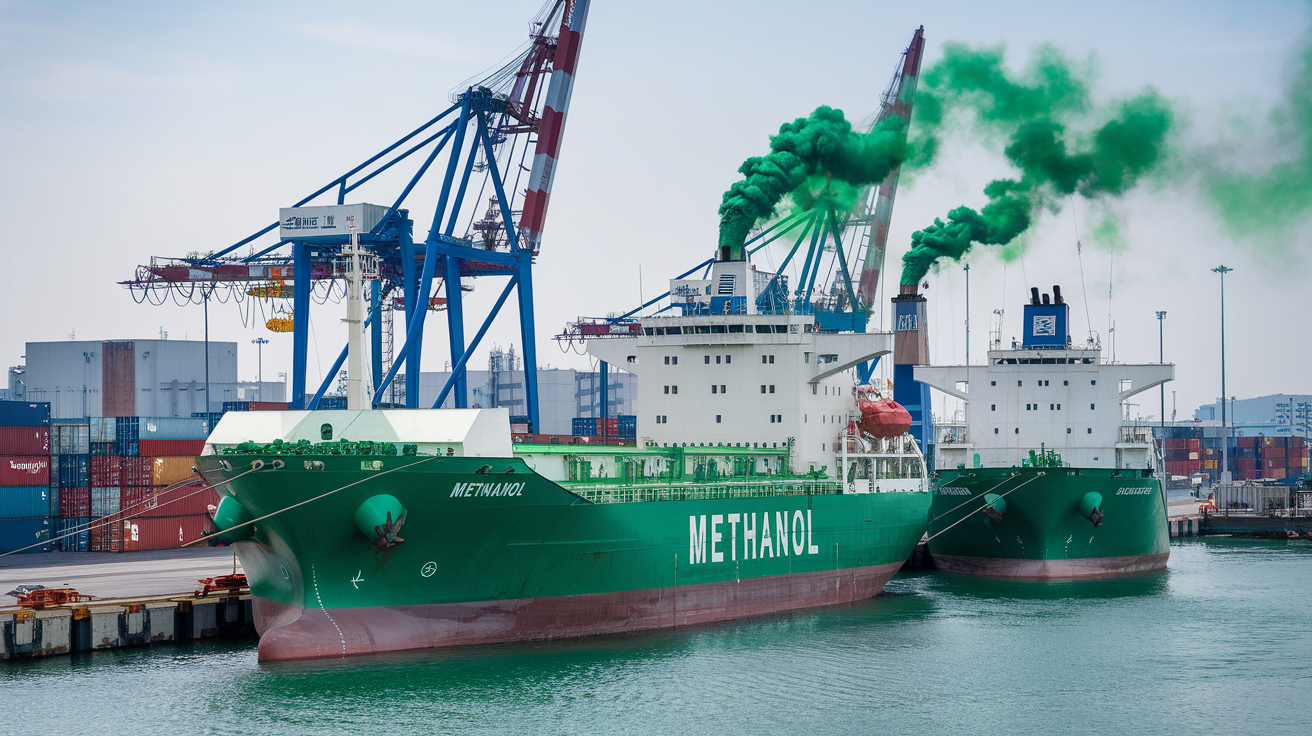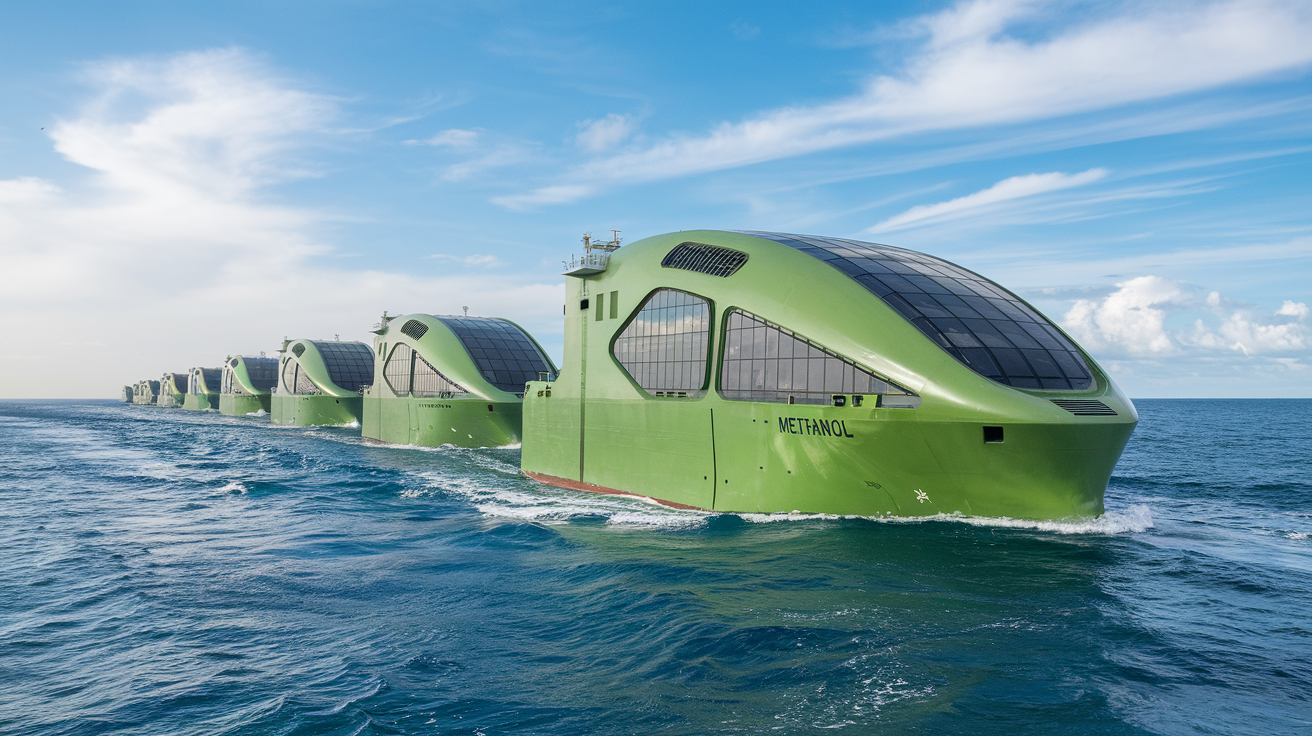Green methanol ships are pioneering a new era in eco-friendly maritime transport. By using methanol derived from renewable resources, such as bio-waste or CO2 capture, these vessels drastically reduce emissions of carbon dioxide, sulfur oxides, and nitrogen oxides. This innovative fuel choice not only enhances environmental sustainability but also aligns with global goals to achieve carbon neutrality in the shipping industry.
Green Methanol Ships Market Size & Share
The green methanol newly built vessels delivery is expected to be 30 units in 2025 to 274 units in 2035, while the green methanol vessels that are retrofitted are expected to be 4 units in 2025 to 213 in 2035. The green methanol ships market is estimated to be USD 4.29 billion in 2025 and is projected to reach USD 15.25 billion by 2030 at a CAGR of 28.9% from 2025 to 2030 and USD 30.98 billion in 2035 at a CAGR of 12.2% from 2031 to 2035 with a CAGR of 21.9% from 2025-2035. Asia Pacifc is estimated to account for the largest Green Methanol Ships market share in 2025. The market for green methanol ships is driven by environmental regulations, technological advancements in dual-fuel engines, government incentives and subsidies for green shipping technologies and the emerging demand from long-haul shipping for clean fuels with high energy density.
The potential changes in the green methanol ships market business landscape mean advancements will be witnessed in methanol fuel cell technology and alterations in regulatory environments. These are the key aspects which will impact the current dual-fuel systems to provide a game-changing alternative in the form of methanol-compatible fuel cells now under development by Wärtsilä and MAN Energy Solutions. Fuel cells with these companies provide high energy efficiency and almost nil emissions. This makes methanol an ideal source for future marine propulsion. Such a shift in technology aligns with the updated strategy on greenhouse gas (GHG) emissions by the International Maritime Organization (IMO), requiring a 70% reduction by 2050. Enhanced compliance deadlines are speeding up the maritime sector’s need for solutions, including green methanol, much more aggressively than in the previous decade. These solutions, complemented by growing in a global methanol bunkering infrastructures over time in main ports like Rotterdam, Singapore, and Houston, would help to alleviate fuel availability concerns and make methanol more viable for long-haul shipping. Combined technological advancements with regulatory pressures force shipbuilders, operators, and fuel suppliers to adapt to green methanol solutions that change the game dynamics for maritime industry growth in pursuing a decarbonized future.
Based on the ship type, the cargo vessels segment is expected to hold a larger market share during the forecast period.
This is also encouraged by the growing demand for sustainable and long-haul shipping solutions. The higher demand for green methanol-running cargo vessels opens up a larger market share for the cargo vessel segment. Since this full transition to decarbonization is on the cards, and methanol running can easily be followed with rules like that of the emission targets of the IMO, the demand can be captured through investments in methanol-compatible engines and dual fuel systems for this growing market. Retrofit cargo fleets could also be pursued as cost-effective options for operators seeking an upgrade to more green fuel options. Companies will also collaborate with ports to allow for the building of methanol bunkering infrastructure at critical global locations that will further propel the uptake of cargo vessels that run on methanol, and ready companies for long-term growth in that space.
Based on the type, the dual fuel segment is expected to grow the most during the forecast period.
In comparison with single fuel, the fastest growth in the forecast period is expected to be in dual fuel for many reasons. Dual-fuel vessels, capable of running on both conventional and methanol fuels, prove an attractive solution for operators to comply with the evolving environmental regulations while maintaining operational reliability. This trend market players can seize through the development of dual-fuel engine technologies that can pave the way for shipowners to gradually shift to methanol-based green fuel without full-time conversion at any time. Dual-fuel ships are already more attractive due to the guaranteed supply chain for conventional and methanol fuels because of cooperation with fuel suppliers.
Based on region, Rest of the World is estimated to have the highest CAGR from 2025 to 2035
In terms of region, the Rest of the World market, which covers Latin America, Africa, is going the way of sustainable maritime practices due to mounting regulatory pressure and the inevitable need to remain aligned with the rest of the world in terms of decarbonization efforts. Market players can grow in footprint by partnering with local governments and shipbuilders to offer vessels with methanol-powered capabilities at a lower price point. Local production and supply chain partnerships will provide the focus for market players to compete positively to capture substantial shares of these fast-growing, untapped markets. The establishment of methanol bunkering infrastructure in these strategic ports will ensure the availability of this fuel and attract operators seeking more greener shipping options.
Major Green Methanol Ships companies include:
- HD Hyundai Heavy Industries (South Korea)
- Samsung Heavy Industries (South Korea)
- COSCO Shipping Industries Co., Ltd. (China)
- Huangpu Wenchong Shipbuilding Company Limited (China)
- Shanghai Waigaoqiao Shipbuilding Co., Ltd. (China)
- Damen Shipyards Group (Netherlands)
- VARD AS (Norway)
- Sanlorenzo Yachts Limited (England)
- Archipelago Expedition Yachts (England)
The market players have adopted various strategies such as development of advanced products, partnerships, contracts, and agreements to strengthen their position in the green methanol ships market. The organic and inorganic strategies have helped the market players expand globally by providing green methanol solutions.


